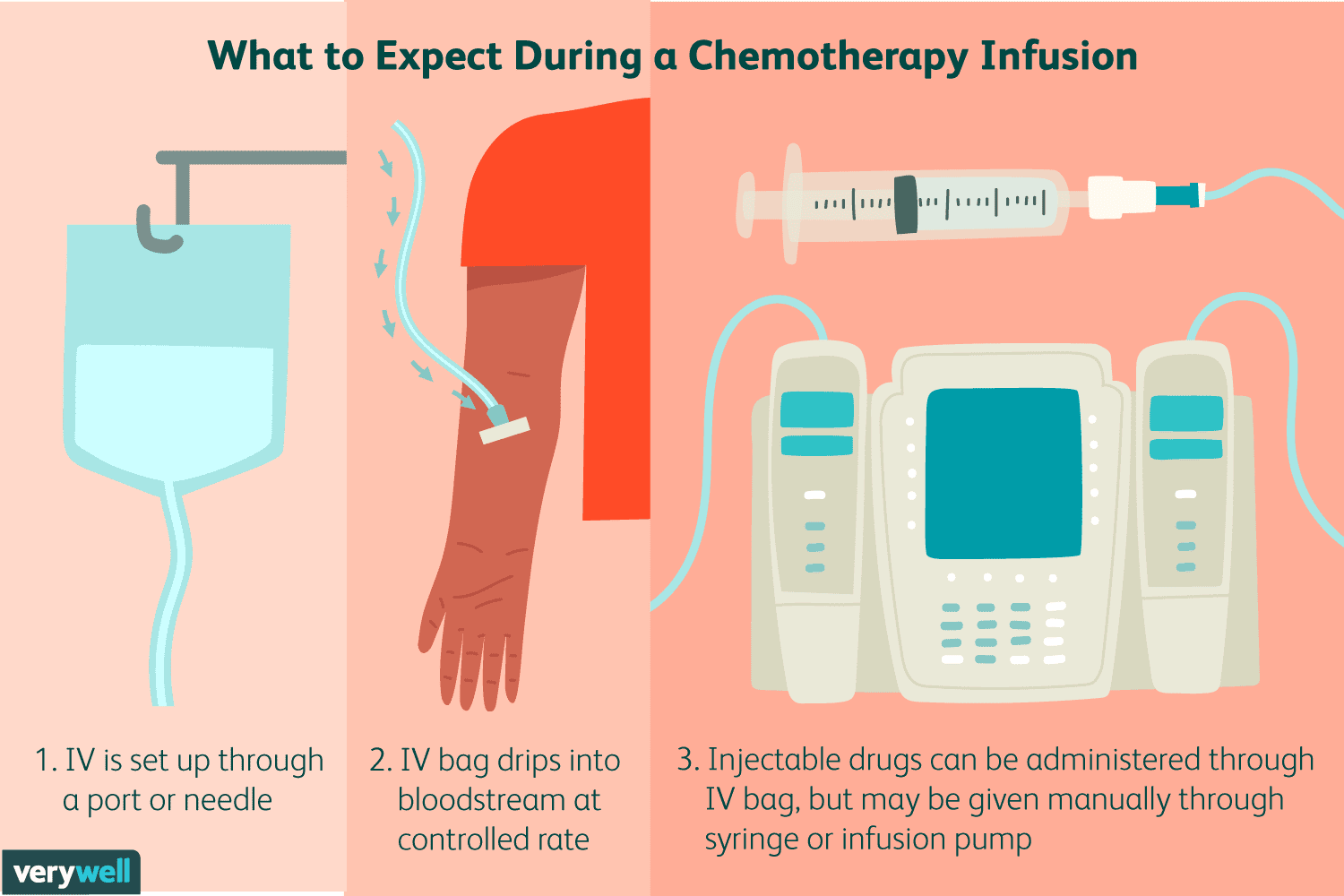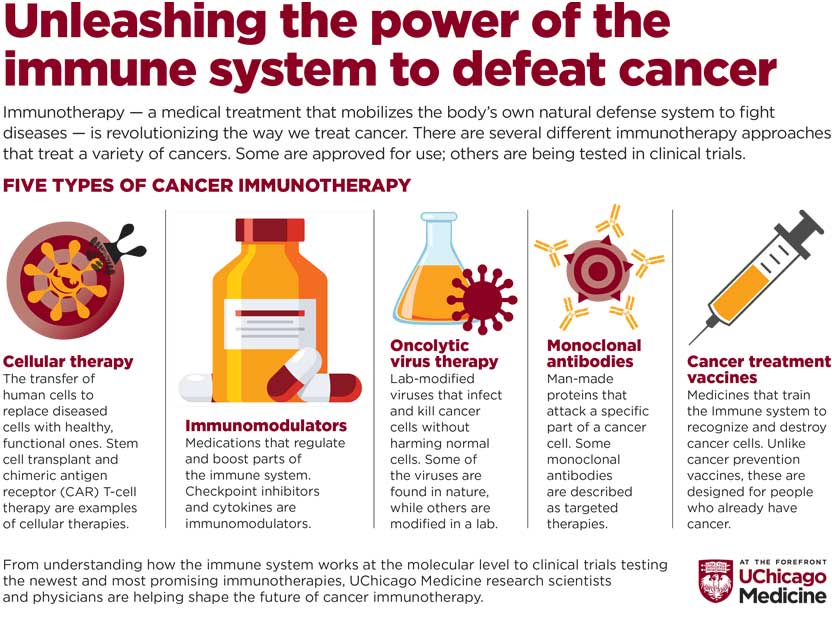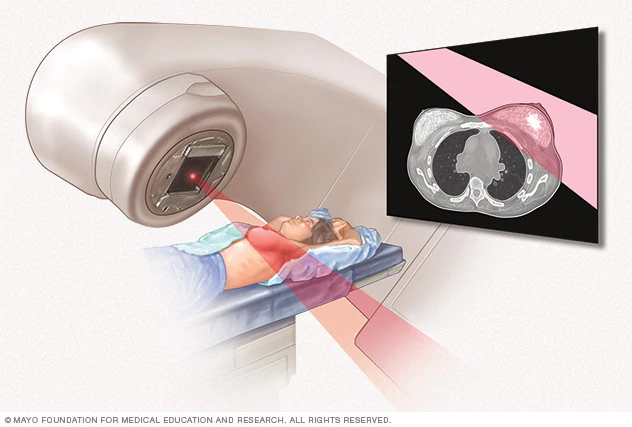What are current cancer treatments?
Cancer is a debilitating disease caused by the uncontrolled reproduction of cells with damaged DNA. Cancer begins in a certain part of the body, but if left unchecked, it can spread through the blood or lymphatic system, making it much more difficult to control.Currently, there are many types of cancer treatments, some better than others for certain cancers. The most common treatments are surgery, chemotherapy, radiation therapy, immunotherapy, targeted therapy, photodynamic therapy, and stem cell transplants. Let's take a look into each of these treatments.
Chemotherapy
Chemotherapy is the process of using cell-destroying chemicals to prevent cells from replicating. When a cell is undergoing mitosis, or cell division, the chemicals inside administered medicine degrade the cell's DNA inside the nucleus. Whether it be before the cell splits, while the cell is copying its DNA, or immediately after it splits, the replication of cells is effectively prevented. Unfortunately, chemotherapy affects all cells in the body and has an 'error rate.' While it is much more likely to affect cells that are replicating and not cells that are 'at a standstill', it can also destroy healthy, non-cancer cells. It especially affects cells that are continuously growing and dividing, such as hair cells, bone marrow cells, skin cells, and digestive system cells. Due to these side effects, chemotherapy patients typically shave their head before therapy begins.Chemotherapy consists of a variety of drugs administered at the same time. Each drug usually targets cells in a different stage of mitosis, so more drugs corresponds to a higher chance of success at destroying cancer cells. Chemotherapy is also administered in a variety of ways, including orally, intravenously (through a vein), through an injection, intrathecally (inserted into the space between layers of tissue covering the brain and spinal cord), intraperitoneally (injected into the peritoneal cavity, the region containing the intestines, stomach, and liver), inta-arterially (through an artery), and topically (through a cream rubbed onto the skin). Chemotherapy is usually given through a catheter inserted into a vein.
Immunotherapy
Immunotherapy is a type of cancer treatment that assist the immune system fight off the cancer cells. By itself, the immune system detects and destroys cells that are not functioning correctly, such as cancer cells. In particular, tumor-infiltrating lymphocytes (TILs) are immune system cells that respond to tumors by destroying them. Unfortunately, some cancer cells can get around detection by the immune system through genetic changes, surface proteins that prevent immune cells from functioning, or causing normal cells in proximity to interfere with the immune system.The first type of immunotherapy is immune checkpoint inhibitors, drugs that block immune cell checkpoints. Normally, immune cell checkpoints ensure that the immune system does not 'overreact' to threats. By inhibiting these checkpoints from being followed, the drug artificially increases immune responses, using brute force to make the immune system stronger to fight cancer.
T-cell transfer therapy is a treatment that strengthens the T-cells. A type of white blood cell capable of destroying cancer, T-cells are removed from the patient and genetically modified to better fight cancer. Once changed, the T-cells are injected back into the body, where they battle cancer.
Monoclonal antibodies are lab-created immune system proteins that bind to targets on cancer cells and mark them for destruction by other immune system cells. By adding these antibodies, scientists are able to increase cancer cell detection.
Vaccines inject weak cancer cells into the body to 'teach' the immune system to fight against them. This causes the immune system to be stronger when fending off real cancer cells.
Finally, immune system modulators target specific part of the immune system to make the immune response stronger.
Radiation Therapy
Along with chemotherapy, radiation therapy is one of the most common cancer treatments. Radiation therapy uses high doses of radiation in the form of X-rays to destroy cancer cells and tumors. When exposed to radiation, cells' DNA becomes damaged, preventing the cell from carrying out normal cell activity, causing it to die. After the cell dies, it is removed from the body.Radiation therapy does not immediately destroy cancer cells. Instead, it slowly degrades cells over weeks or months after therapy ends. This slow process is effective but long and can help reduce the size of or completely eliminate tumors. Radiation therapy can either be internal or external, depending on a variety of factors such as cancer type, tumor size, tumor location, normal tissues in proximity of the tumor, age, and other medical conditions.
External beam radiation therapy involves a machine that aims radiation toward the part of the body that contains cancer cells. External beam radiation is rarely aimed at the whole body-it only targets specific parts locally.
In contrast, internal radiation therapy is when a source of radiation is put inside the body. If the source is solid, it is called brachytherapy. Whether it be a seed, ribbon, or capsule, the source is placed close to the tumor and only acts locally. Therapy with liquid sources is called systemic therapy. Whether received through swallowing, a vein, IV line, or injection, systemic therapy causes body fluids (urine, sweat, saliva) to give off radiation for a prolonged period. 
